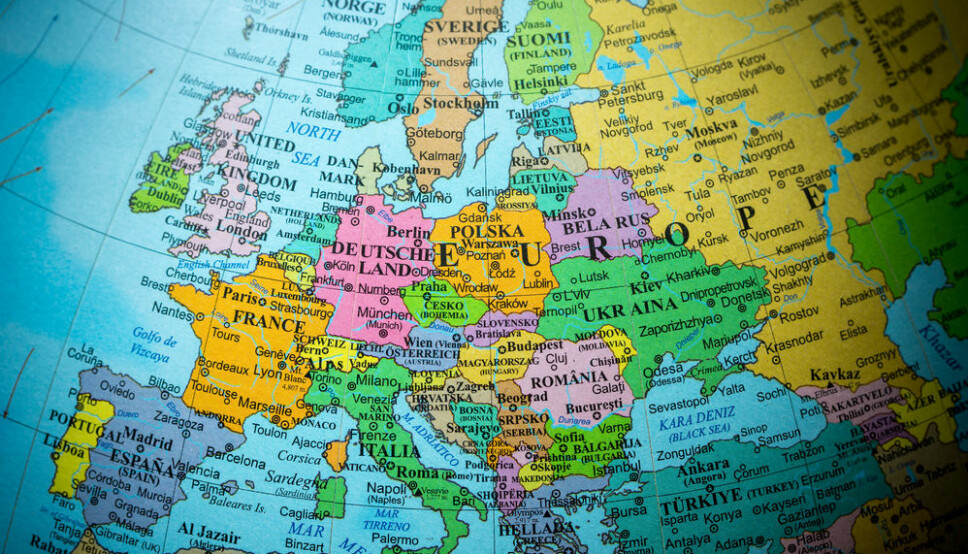Researchers' Zone:

The future of renewable energy targets in Europe in the era of the Green Deal
OPINION: The EU as a whole has committed to ensure that 32% of its energy consumption comes from renewable sources by 2030 but individual targets for member states towards this goal are not binding. Still, there are other ways for the EU to ensure compliance by member states.
Replacing fossil energy sources with renewable energy is an important way to avoid climate change, and organizations like the EU can play a vital role in leading international climate action.
The EU has adopted a number of climate and energy policies, including the recently announced European Green Deal, consolidating climate change as a top priority of the recently elected EU Commission.
In the current scenario of economic turbulence, with Europe and the whole world suffering from the shock of the COVID-19 pandemic, it is important for the EU to put the green economy and, particularly, renewable energy policy at the center of recovery strategies.
While governments may be tempted, in the re-opening phase, to take advantage of the historically low oil prices and put their energy transition on hold, we should all be mindful that for the super-wicked challenge of climate change no vaccine is in sight.
The European Green Deal and the 2030 Climate and Energy Framework, which sets an EU-wide target of 32% renewable energy by 2030, represent useful instruments to ensure that also after the COVID-19 crisis, more investments are channeled towards renewable energy.
However, the question is how to ensure that each member state actually works towards the ambitious climate goals?
The European Green Deal can boost the energy transition
The ’European Green Deal’ is a comprehensive strategy, which aims at reinforcing the EU’s global leadership in climate action, while stimulating the growth of the EU industry.
As part of this strategy, at the beginning of March 2020 the European Commission presented a proposal for the first European Climate Law, which would set out a legally binding objective of climate neutrality by 2050.
Achieving such target would entail a radical transformation of the energy system, with renewable energy largely replacing fossil fuels. The European Green Deal introduces the possibility of an increase of the 2030 target.
However, the concrete legal instruments to ensure the achievement of the target are not to be found in the Green Deal, but in the 2030 Climate and Energy Framework, which is the result of a delicate interplay between Member States and central EU institutions.
Not all countries are in the same position
Denmark is, as one of the first countries worldwide to adopt a national climate law, which will cut emissions 70% by 2030, at the forefront of the transition towards a low-carbon economy.
Being a pioneer and leading exporter of renewable energy technologies, especially wind power, Denmark has much to gain from a widespread increase of the renewable energy share at the EU level.
However, other EU Member States, e.g. some Central and Eastern European countries, are more reluctant towards a renewable energy transition, amidst concerns that phasing out fossil fuels might determine a threat to their energy security.
Such geopolitical concerns are widely reflected in the legal nature of the 2030 EU renewable energy target, which represents the result of a hard-fought political compromise.
The EU 2030 renewable energy target
In 2018, the EU approved a new Renewable Energy Directive, which sets a target of 32% renewable energy in gross energy consumption, to be achieved at EU level by 2030.
Thus, the 2018 Directive gave effect to the political agreement known as the 2030 Climate and Energy Framework, approved by the European Council in 2014, which also includes targets for a 32.5% increase in energy efficiency and a 40% reduction of greenhouse gas emissions compared to 1990 levels.
The renewable energy target is only binding upon the Union as a whole, whereas Member States are free to set their own targets in their National Energy and Climate Plans.
It is important to note that the renewable energy target is not set in stone and it can be revised upwards. A more ambitious target would depend on political and economic factors.
Not the first experience with renewable energy targets
The EU has already adopted renewable energy targets in the past.
In 2007, with the approval of the 2020 Climate and Energy Package, the EU set specific targets for the three policy areas of renewable energy, energy efficiency and greenhouse gas emissions reduction.
The 2020 Package was also known by the catchy title of ‘20-20-20 by 2020’, as it aimed at achieving an overall 20% share of renewable energy in gross EU energy consumption, a 20% increase in energy efficiency and a 20% reduction of greenhouse gas emissions by 2020.
As of May 2020, the majority of Member States is on track with their 2020 target, although a number of Member States are still lagging behind. It will be important to keep monitoring which actions the European Commission will undertake against non-compliant Member States, once final data on the renewable energy share are available.
Are non-binding targets good enough?
One important difference between the 2020 and the 2030 renewable energy target is that the former not only mandated the mentioned 20% EU target, but also provided for individual targets, which were legally binding upon Member States.
Therefore, the shift to non-legally binding targets at Member State level in the 2030 Climate and Energy Framework has given rise to some criticism, due to the risk that the Commission might not have the necessary powers to ensure its achievement.
EU and Member States: aligned interests?
The lack of a legally binding character of the 2030 renewable energy target is closely related to the polarized political negotiations for the 2030 Climate and Energy Framework.
On one side, a block of environmentally progressive countries, led by Germany and Denmark, pushed for the adoption of ambitious renewable energy targets.
On the other side, a group of Central and Eastern European Member States, led by Poland, opposed the adoption of renewable energy targets, emphasizing the possible risks for their energy security and claiming their sovereign right to determine the composition of their own energy mix.
Beyond the political level, the non-binding nature of the 2030 renewable energy target is closely related to the constitutional reforms carried out by the Treaty of Lisbon, which redistributed the competences between the Union and its Member States.
With particular regard to energy, no specific regulation was provided prior to the adoption of the Lisbon Treaty. Paradoxically, this allowed the EU to set binding renewable energy targets at Member State level, taking advantage of its competences in environmental matters.
The Lisbon Treaty, however, introduced a shared competence in energy matters, in Article 194 of the Treaty on the Functioning of the European Union (one of the two foundational treaties of the European Union), determining that EU legislation ‘shall not affect a Member State’s right to determine its choice between different energy sources and the general structure of its energy supply’.
Therefore, beside the political opposition of several Member States, it turned out not to be legally possible to adopt binding renewable energy targets at Member State level.
The bigger picture
From a broader perspective, the introduction of a common renewable energy target aims at fostering greater integration in the EU energy policies and enabling the green transition in the EU.
A key step in this direction was the creation, in 2015, of the ‘Energy Union’, a long-term plan for cooperation between Member States aimed at bringing ‘greater security, sustainability and competitiveness’ into the EU energy market.
The goal of decarbonization, which also includes an uptake of renewable energy consumption, represents one of its five policy areas.
In 2018, the Energy Union was further operationalized through the adoption of the new Governance Regulation, which provides the legal tools to enable the achievement of the Energy Union’s objectives, including those related to decarbonization and the promotion of renewable energy.
In particular, the Regulation introduces a legal obligation, for Member States, to draft and regularly update National Energy and Climate Plans (NECPs), thereby setting their individual 2030 renewable energy target as well as their expected trajectory towards such targets.
The European Commission assesses Member States’ NECPs, verifying that they jointly contribute to the achievement of the EU’s collective target of 32% renewable energy by 2030.
How effective will the 2030 renewable energy target be?
Does the lack of a legally binding character for individual Member States make the 2030 renewable energy targets weaker than their predecessors?
This depends on what is meant by a ‘weak’ or ‘strong’ target; the existence of a number of mechanisms to ensure compliance at the EU shows that there are more than one shade of binding for the 2030 renewable energy target.
If the strength of a target is exclusively given by the possibility for the European Commission to initiate infringement procedure against non-compliant Member States, it is fair to question whether the 2030 targets are equipped with the necessary ‘teeth’.
Additionally, the new instrument of the Governance Regulation provides the European Commission with the prerogative to constantly monitor the progress of each Member State towards the collective 32% target.
While the initiation of infringement procedures is not explicitly foreseen under the Governance Regulation, the Commission certainly has the power to issue recommendations to address possible ambition gaps (when a Member State’s target is lower than the one resulting from the formula set in the Governance Regulation), or delivery gaps (when a Member State does not fulfil its pledges under the National Energy and Climate Plan).
Moreover, the Regulation does not explicitly exclude that the Commission might resort to harder enforcement measures, should Member States not adequately implement its recommendations.
As the final details of the EU Green Deal are still under development, the EU has the opportunity to strengthen the system of compliance with renewable energy targets.
It will be important to closely monitor these developments, which are crucial for the achievement of climate goals.
Read this article in Danish at Videnskab.dk's Forskerzonen.
References
Alessandro Monti's profile (University of Copenhagen)
Beatriz Martinez Romera's profile (University of Copenhagen)








